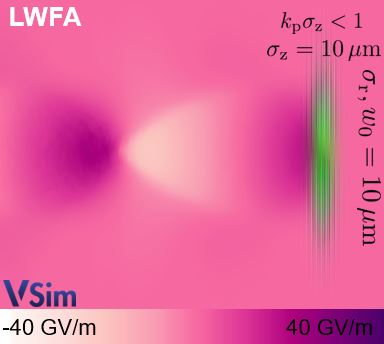
Here, intense laser pulses are used to drive a plasma wave, which then generates gigavolt-per-metre to teravolt-per-metre electric fields in a co-moving plasma cavity which is highly suitable to produce relativistic electron beams in compact setups. A large worldwide community is active in this field. Our approach is to explore injection and bunch generation techniques and applications which are not yet in the mainstream of the worldwide community.
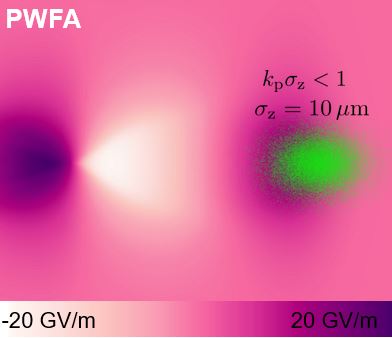
Here, intense particle beam drivers are used to drive the plasma wave. Advantages of this approach are the fact that such systems are practically dephasing-free, can be dark-current-free and that the peak transverse fields allow to use comparably low ionization thresholds for injection methods such as Trojan Horse. Electron beams from state-of-the-art linacs can be used to power the PWFA stage, or electron beams from hybrid LWFA2PWFA stages.
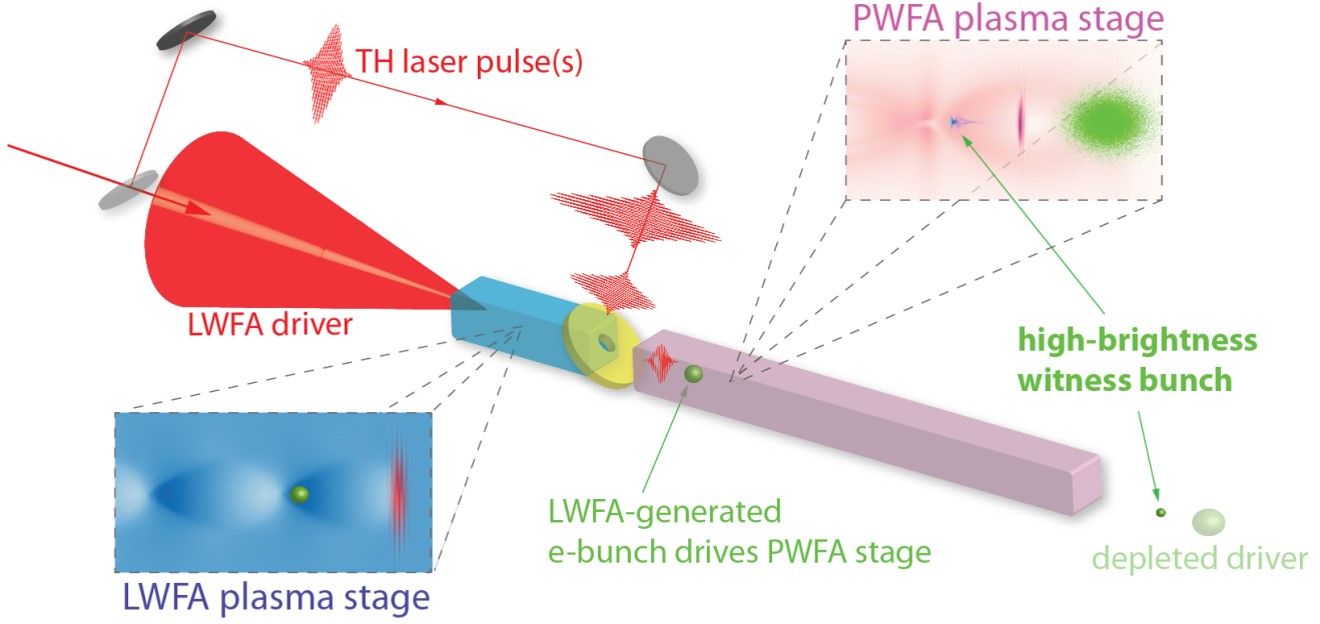
Laser-driven plasma wakefield accelerators (LWFA) can produce ultrashort electron beams with high peak currents. Even at comparably high energy spreads and average emittance values, such electron beams are potentially great drivers for particle beam driven plasma wakefield accelerators (PWFA). This project pioneers experimental and theoretical exploration of this approach. It allows to explore PWFA in many of the LWFA-suitable laser-plasma-facilities even in university scale labs.
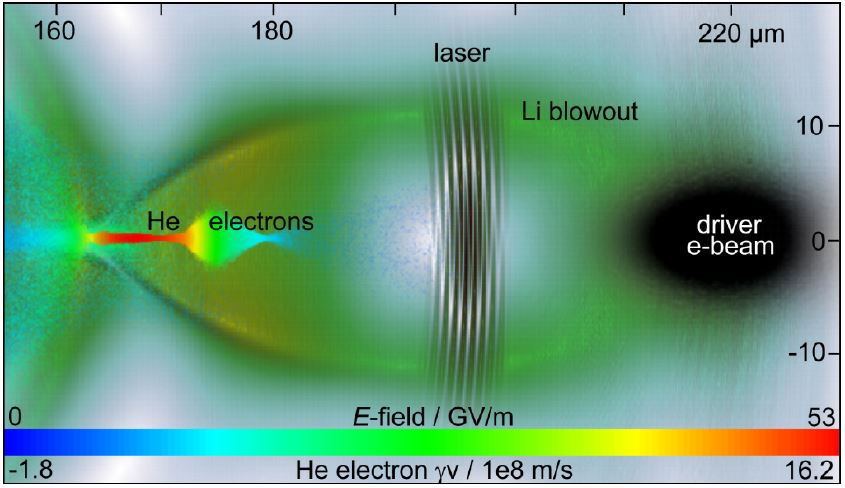
This approach combines the best of LWFA and PWFA and uses nonrelativistic laser pulses to release ultracold electron populations meticulously in a particle-beam driven plasma wave. This opens a path towards ultralow emittance and phase space control, and hence ultrahigh 5D- and 6D-brightness, dark-current free operation, dramatically enhanced tunability and stability. This approach is know in the plasma community and beyond as Trojan Horse PWFA.
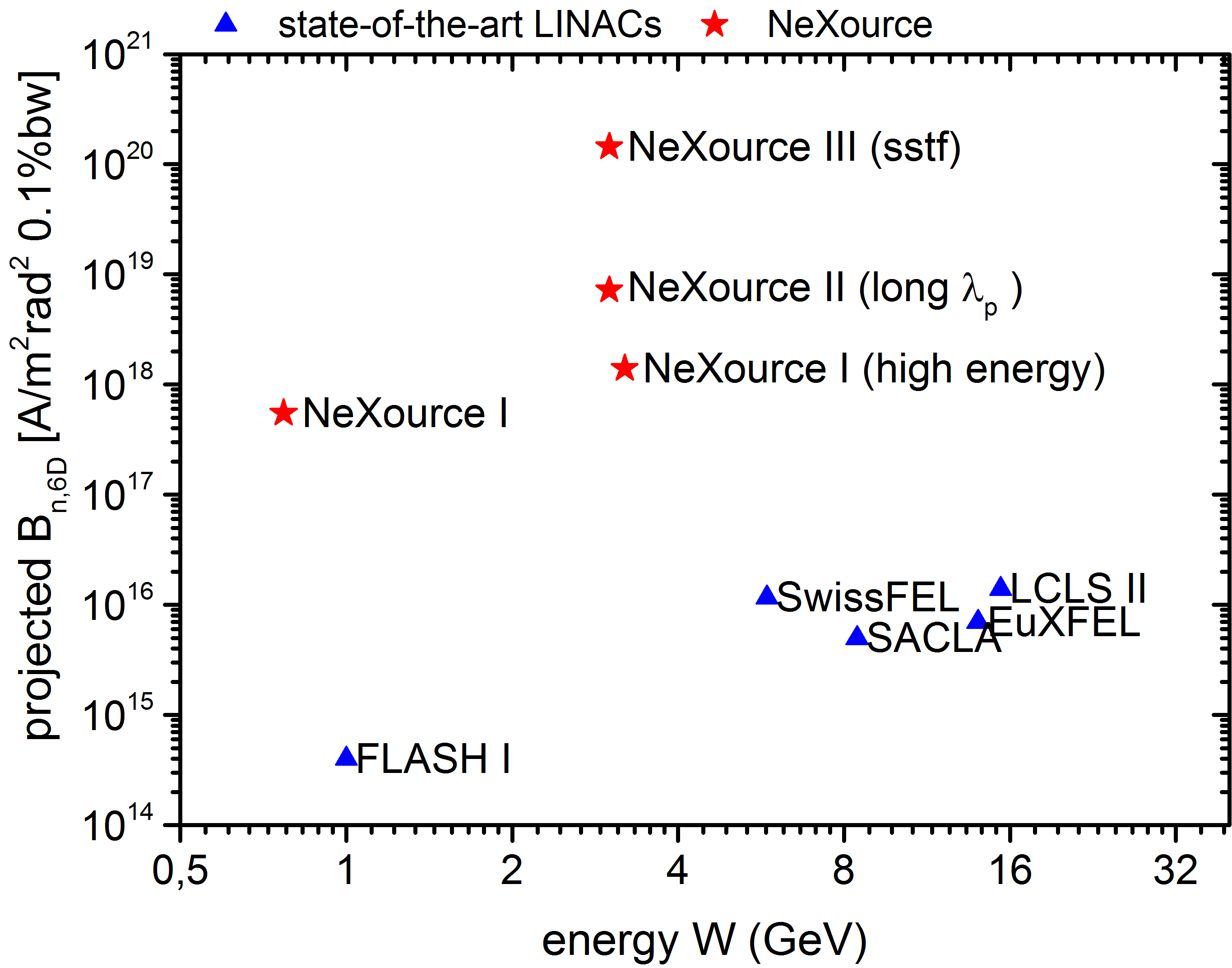
The control of transverse and longitudinal phase space of electron beams is a key towards designer beams tailored for various applications such as light sources or high energy physics. We use plasma photocathodes to optimize the transverse phase space, and 'escort' bunches to achieve tailored beamloading in dephasing-free plasma waves for control of longitudinal phase space. The resulting electron beams have ultralow residual energy spread and ultrahigh 6D-brightness: many orders of magnitude brighter than in the best state-of-the-art systems which power e.g. hard x-ray free-electron-lasers.
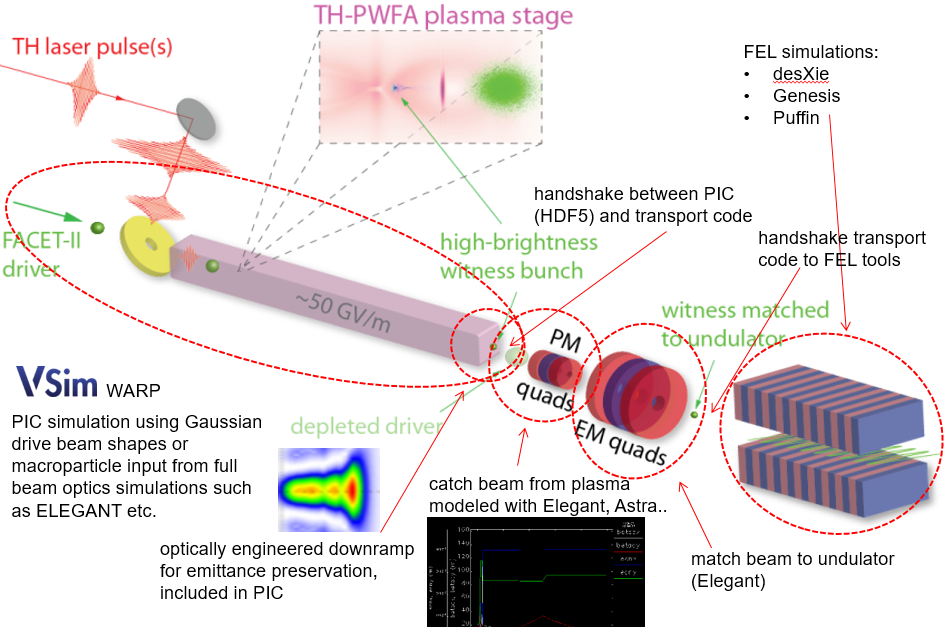
We are designing compact light sources based on plasma wakefield accelerators, in particular the Trojan Horse scheme for ultrahigh electron beam quality, combined with the NeXource scheme whch allows phase space control and ultrahigh 6d brightness. This allows e.g. to beat the Pellegrini criterion and the Pierce parameter by a wide margin and to make use of ultrahigh gain in hard x-ray free-electron-lasers.
ADDRESS
16 Richmond Street
Glasgow G1 1XQ UK
CONTACTS
Email: bernhard.hidding strath.ac.uk
Phone: +44 (141) 548 4994